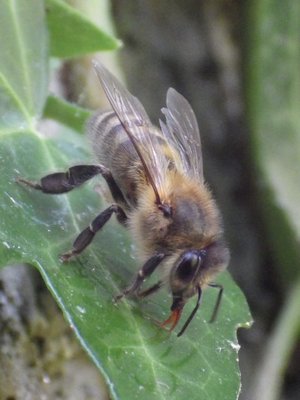

Wasps never have pollen-carrying hairs (although masarid wasps feed on pollen). Think of a “wasp waist” a constriction in the petiole than many wasps have. Bees are also usually hairier and more robust than wasps. When magnified, bee hairs are branched (plumose) not simple and straight like those on wasps. One hair character sets bees apart from wasps. Wasp Identification: Wasps have four wings, chewing mouthparts, a sting in females, and long antennae. Many flies have huge eyes that meet at the top of their heads. They have piercing/sucking or sponging mouthparts. Flies usually have short, stubby antennae with single hairs, or feathery antennae. So, how do you tell these pollinators apart?įly Identification: Flies have only one pair of wings, while bees have four wings. Bumble bee set, bonnet and romper set, newborn outfit, sitter, newborn hat and romper, yellow and black fuzzy alpaca, photo prop 5 out of 5 stars (718) 16.03. By mimicking bees and wasps in appearance, they gain protection from predators. Check out our fuzzy bumble bee selection for the very best in unique or custom, handmade pieces from our shops. the Syrphidae) are bee and wasp mimics in color, form and actions. Colors: Bumblebees are hairy with a fuzzy abdomen with soft fuzzy hair. Bees are closely related to wasps, but have many microscopic, feather-like hairs that give them a hairy or fuzzy appearance. There are two kinds of insects that are often confused with bees - flies and wasps. Carpenter bees are primarily black, but some species may be green or purplish. Bumblebees always have fuzzy bands of yellow and black. The abdomen contains digestive organs and the sting in females. Carpenter bees can be black, green, or purplish. The thorax bears the legs and four wings (two forewings and two hind-wings coupled by tiny hooks). Additional ID features that may be seen with the aid of a hand lens. The head has the compound and simple eyes, segmented paired antennae, and mouthparts including mandibles for biting, and the proboscis for drinking nectar. Pollen-carrying hairs on rear legs and side of thorax, appearing to carry pollen in its 'armpit.' Common nesting locations. This guide gives information for identifying 10 major groups of bees commonly observed in Arizona including key characters, sizes (in mm), nesting habits, floral preferences, and distinctive behaviors.īees, like other Hymenoptera, have three body segments a head, thorax, and abdomen. There are 1,300 native species of ground-nesting, twig-nesting and parasitic bees found within Arizona. Honey bees pollinate crops, but native bees also have a role in agriculture and they are essential for pollination in natural landscapes. Plants rely on pollinators to reproduce and set seed. For people, this means every third bite of food along with fibers, nutrients and beverages is the result of pollination. We don’t mean this sarcastically, rather there are some surprisingly good bumble bee mimics around that make one second guess. The eggs the female lays take approximately 36 days to develop to an adult.Bees provide essential ecosystem services in natural and agricultural landscapes as pollinators of three-quarters of flowering plants and as soil-builders. To identify a bumble bee, start by confirming it is a bumble bee. The female then seals this portion of the gallery with chewed wooden pulp. She will provision each gallery cell with a mass of pollen and regurgitated nectar upon which she will lay a single egg. As a female creates tunnels, she will bore larger, open areas into the tunnel, called cells, where her young will develop. New galleries average 4-6” (10-15 cm), long but reused galleries may extend up to 10 feet. Wooden structures on the property, like decks and fences, are also prone to carpenter bee infestations.

These wood bees are particularly inclined to build their galleries in soft, unpainted and worn wood, although some species may prefer hardwood. They may reuse an already existing gallery or they may excavate new galleries.įemale carpenter bees chew circular holes through wood to make individual galleries to lay eggs and protect their larvae as they develop. The bees that survive the winter will emerge in the spring to feed on nectar, mate and build galleries. Adult carpenter bees overwinter in abandoned nest tunnels where they have stored limited pollen to survive the colder temperatures. Unlike bumble bees, carpenter bees are solitary and do not live in nests or colonies.


 0 kommentar(er)
0 kommentar(er)
